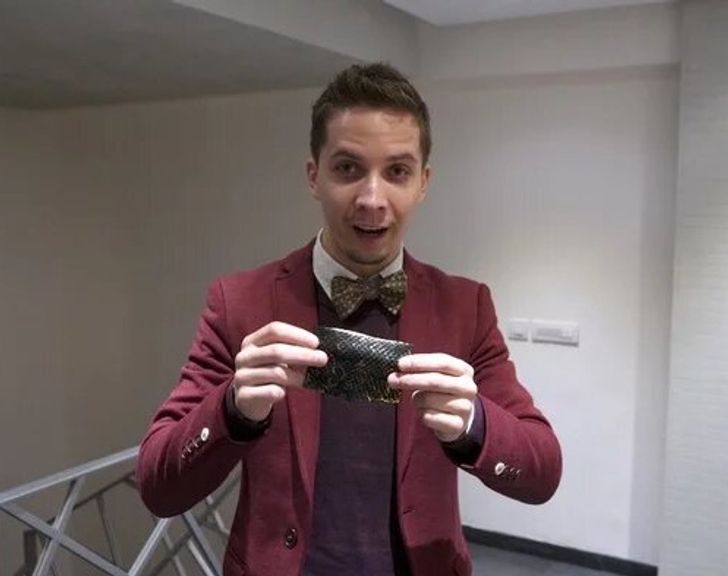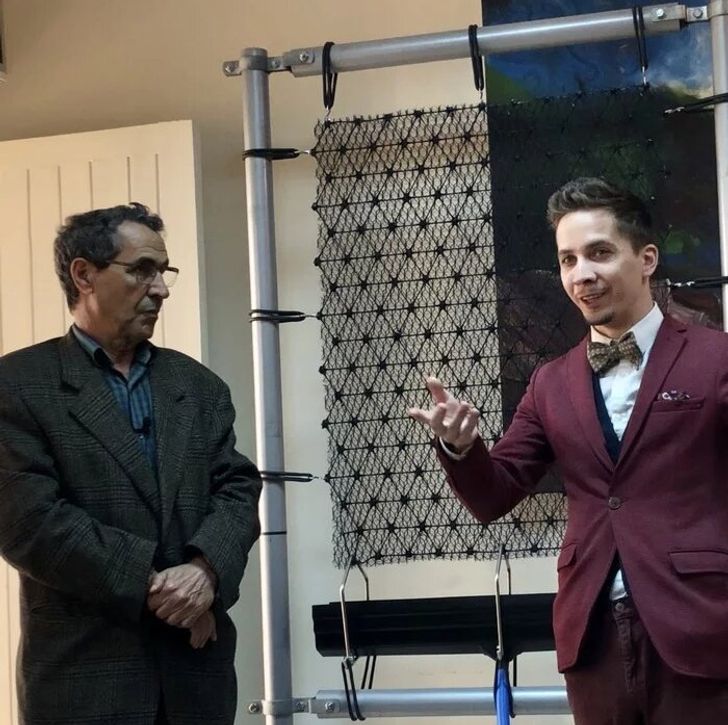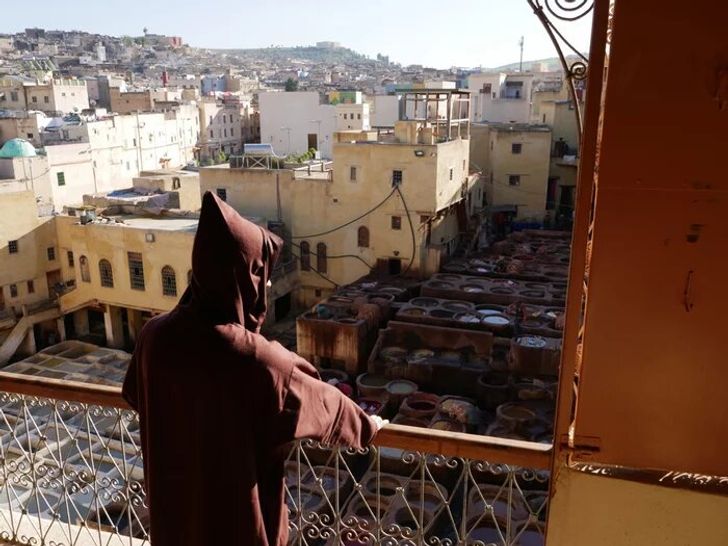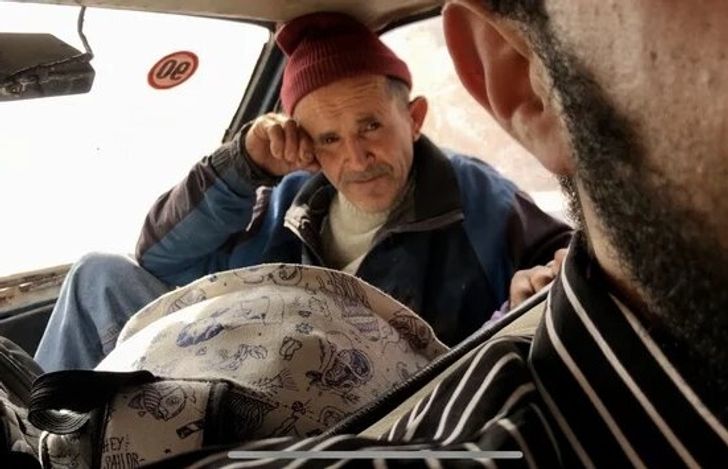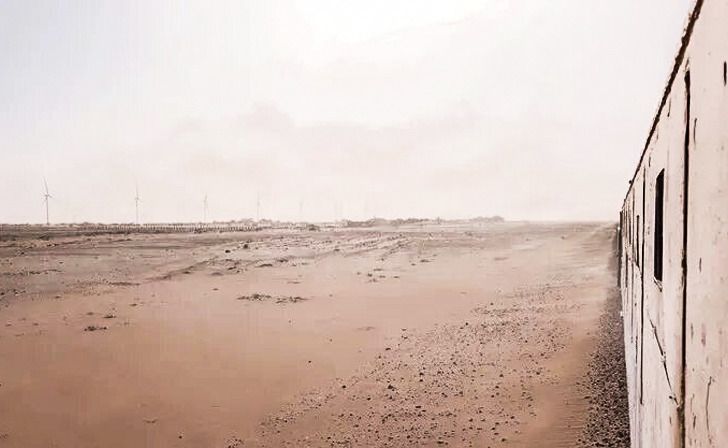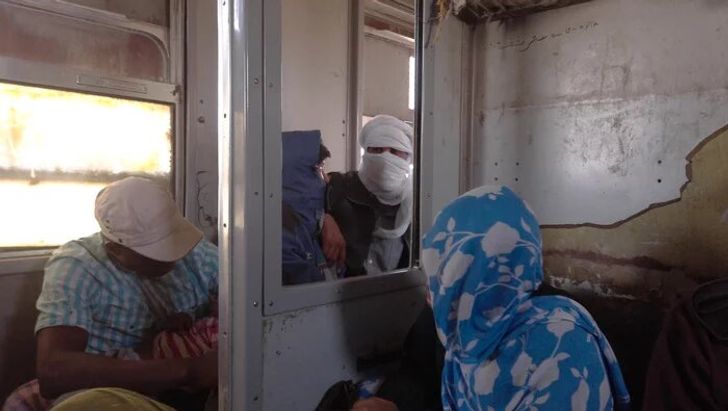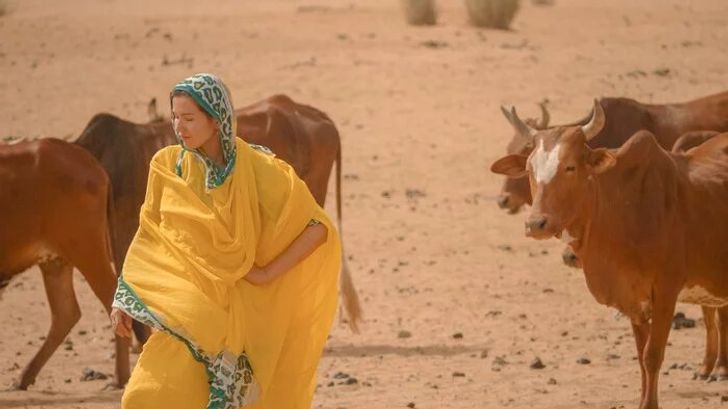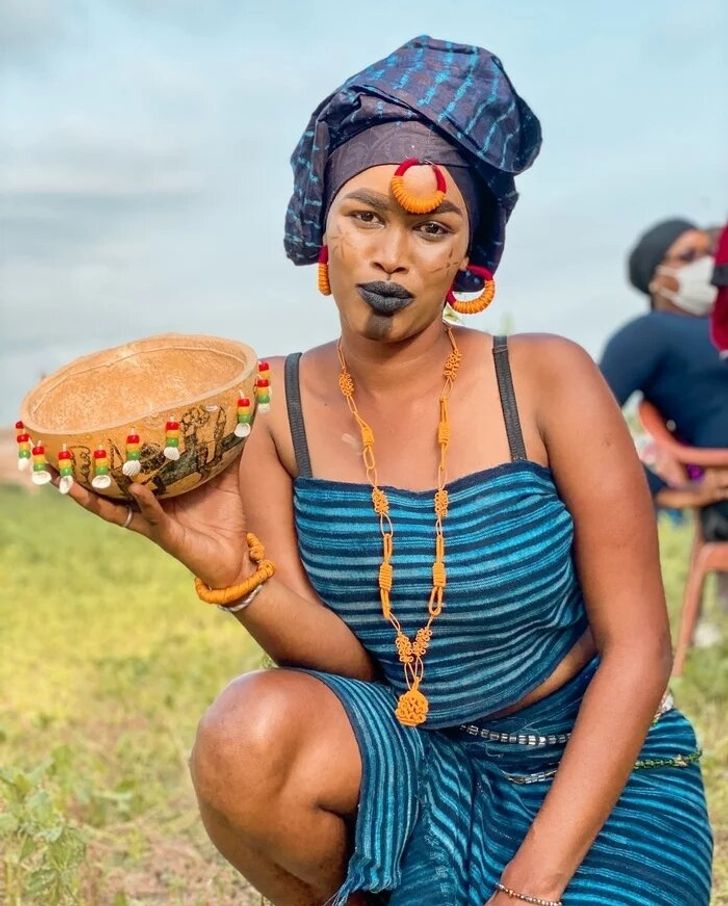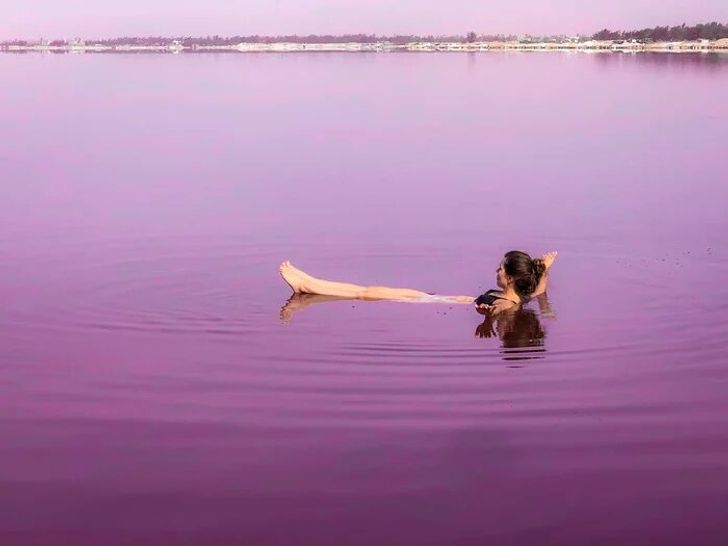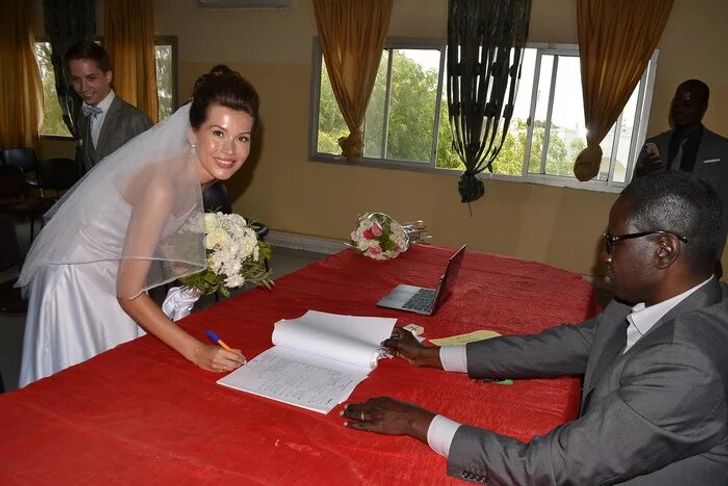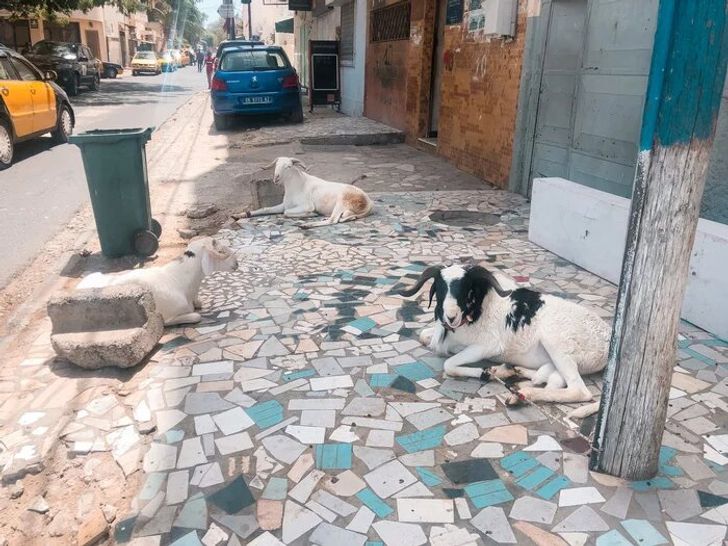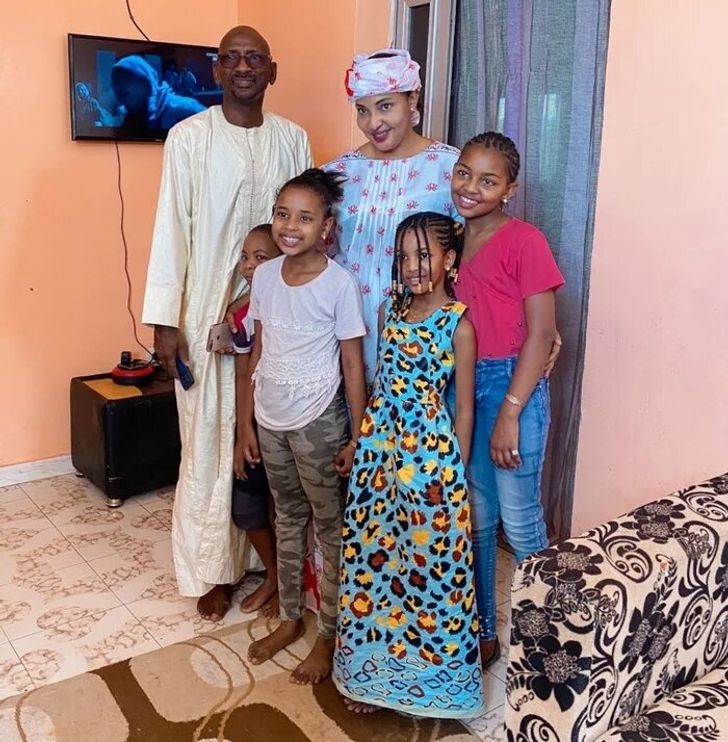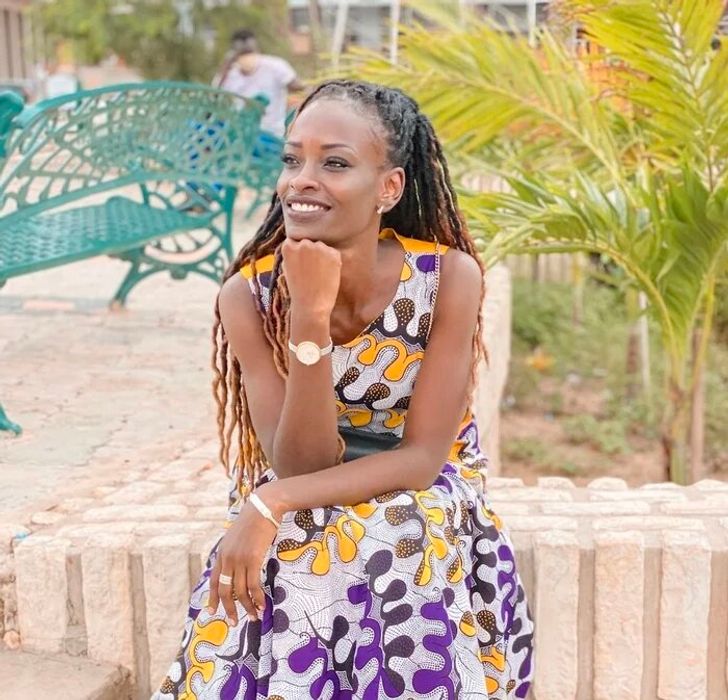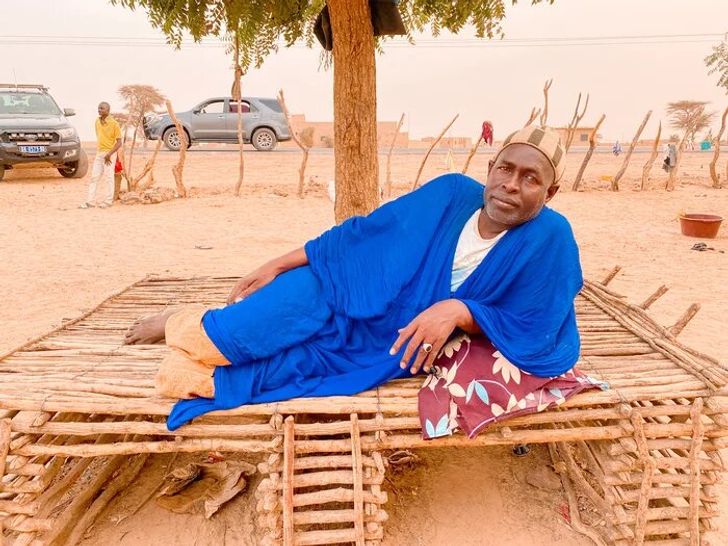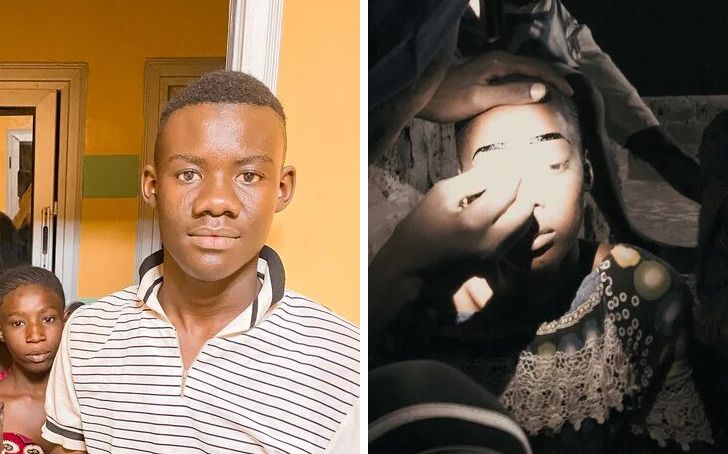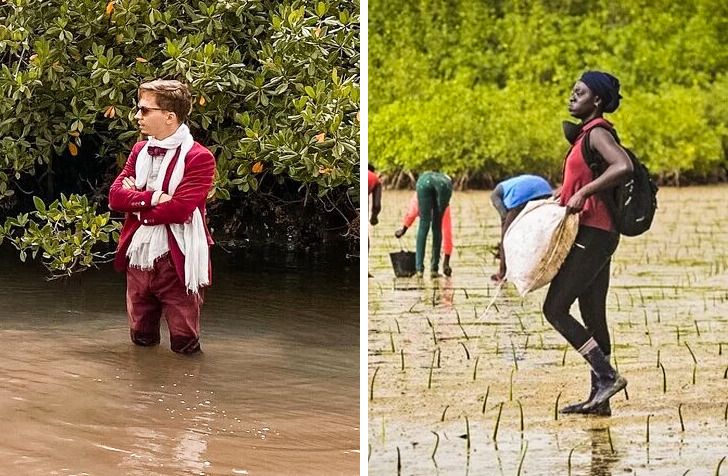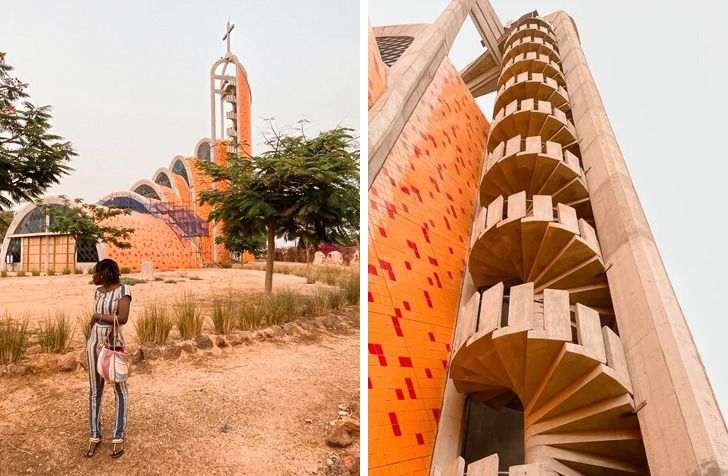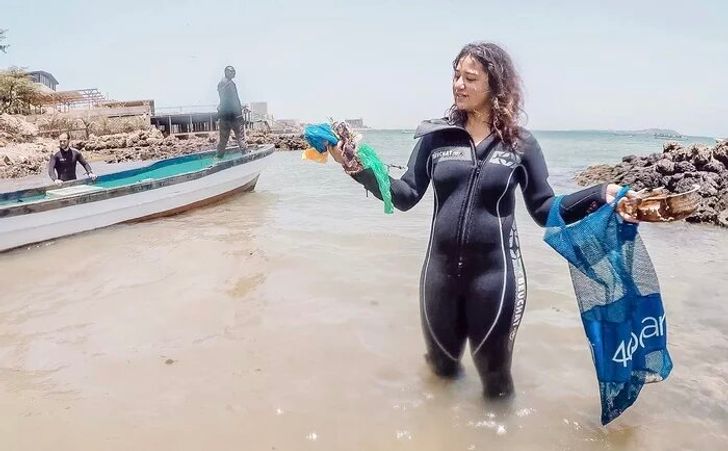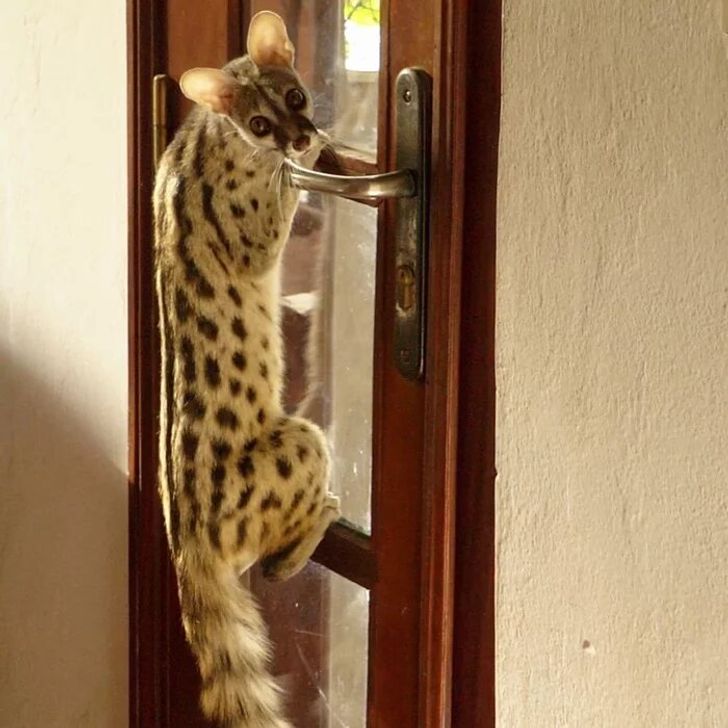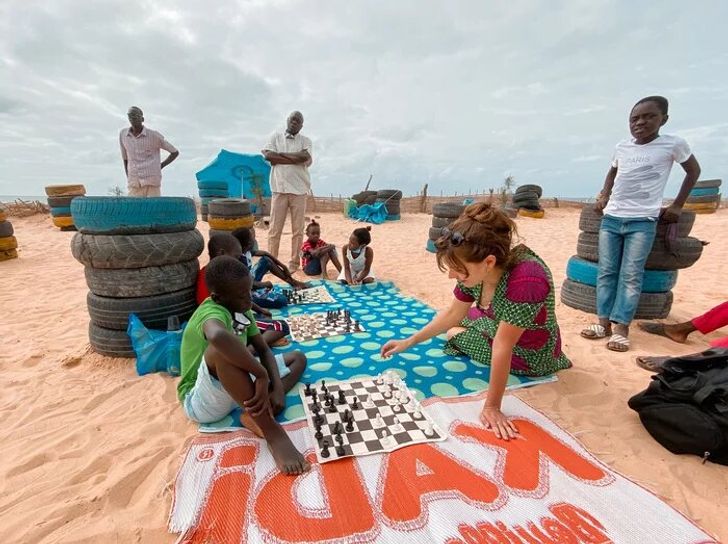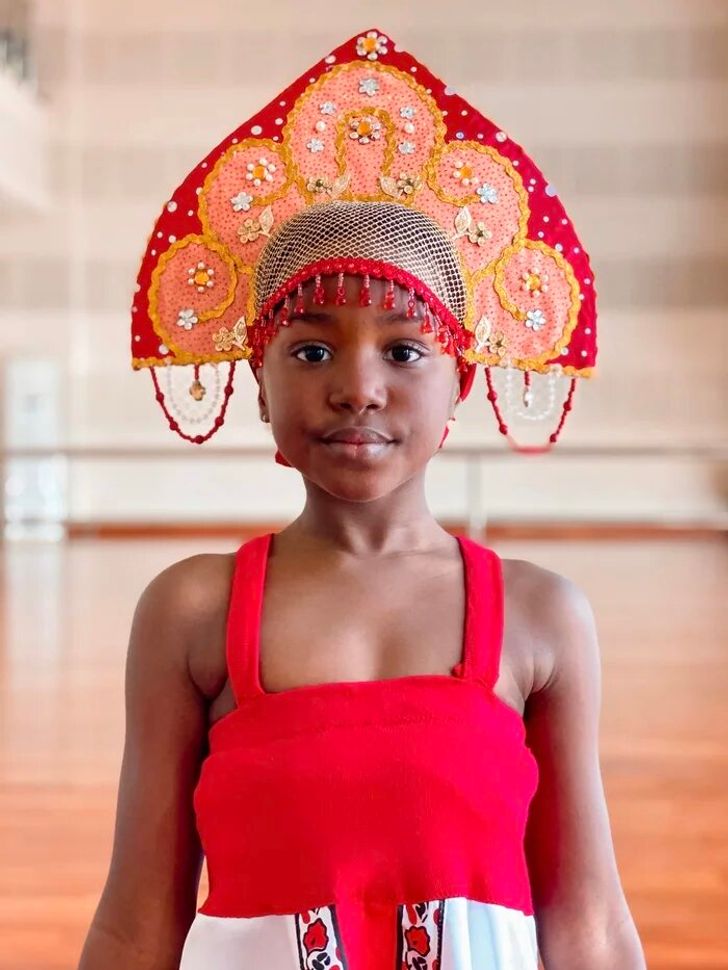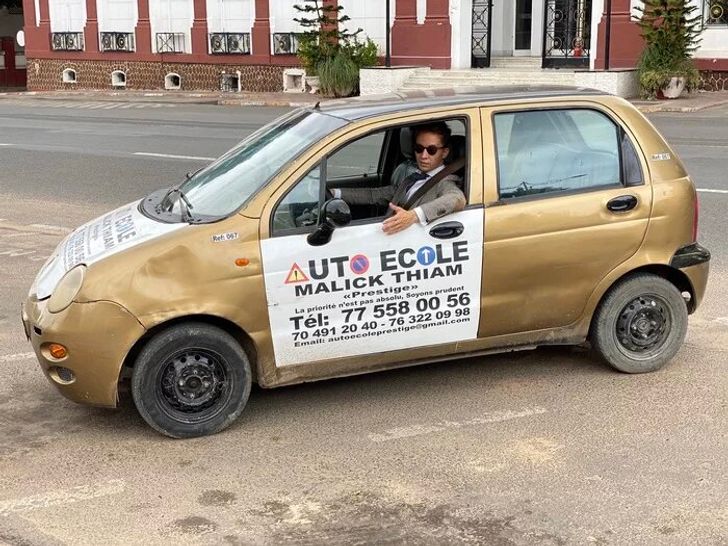dialogue messed up
A Couple From Russia Travels Through Africa and Talks About Some Things That Might Make Your Head Spin
Alina Titova and her husband Vasiliy had been saving their money for an apartment and a car, but finally decided to use their funds differently and went on a 4-year expedition around the world (they ended up spending more time than expected in Africa). Their goal was to show the good sides of various cities and countries and find people who are passionate about their work (primarily ecological projects) and tell the whole world about them.
Bright Side is publishing Alina’s stories with the coolest facts from this adventure.
- We started our expedition in Africa. In Morocco, we visited Rabat — the capital, and then visited Fes, Casablanca, Marrakesh, and Agadir. We also visited a local business incubator where we met girls who produce bags, wallets, and business card holders from fish waste. In the photo above, you can see Vasiliy holding a sample of the “leather” that comes from this waste — it basically looks like snake leather.
- We also visited an association whose work is “catching clouds” and transforming them into water with the help of the net shown in the photo above. 10 square feet of net produces 5 liquid gallons of water which helps supply water to several villages.
- This is one of the few mycologists in Morocco, he grows edible mushrooms for local shops. He is also a mushroom designer — he creates furniture from mycelium (the vegetative part of the fungus). He mixes mycelium bacteria with straw, sprouts them, and makes cool stuff like lampshades, ashtrays, and vases. You can see his vases in the photo above. All of these things are alive. If you hang this lampshade at home and spray water onto it, edible mushrooms will grow on it and it can last for up to 10 years.
- If you want to go to Paris, I recommend that you visit Fes instead and spend some unforgettable time there. But don’t dress like tourists, leave your shorts at home — otherwise, getting to know the country will become an uphill task. Also, few people wear sunglasses here — they prefer to look into the eyes of the person they are talking to. Vasiliy bought the traditional clothing called jellaba. This outfit might look very unusual, but many people wear it here — it’s comfortable to be in it in the daytime and it keeps you warm at nighttime. It’s the exact type of clothing that George Lucas used as the basis for the Jedi robes and the Tattoine Jawas prototype. Do you recognize it?
- Our Moroccan friend Hamid took us out of town to a village to visit his family. It was the first time I saw 9 people fit into an ordinary passenger car. There was even an old man who was calmly sitting in the trunk. Also, in Morocco, people put their hand to their heart after a handshake, but I noticed that both men and women kiss their hand after handshakes in Hamid’s village.
-
We spent almost one month in the Sahara. We first traveled there by bus and other vehicles through the Western Sahara, and then we stopped in Mauritania. The country is poor, but it gets 40% of its electricity from the sun and the wind. Windmills in the desert look so surreal! Tell me now, is the photo above a shot from a fantasy movie or a photo taken by Alina Titova?
- In order to get to the Mauritanian city of Atar, you need to get on the longest train in the world. It is 1.5 miles long, it transports coal from the economical capital Nouadhibou deep into the desert — to the town of Zouérat. It has about 200 wagons, and only one of them is for passengers. You can either ride in a wagon with coal or stay in the wagon with locals. Women are always quarreling and shouting. If there is a moment of silence, one of the women will realize that her time has come and will start another quarrel. Especially if a man has done something wrong. Salut to matriarchy!
- I was given a nice present in Mauritania — the national costume. It is very beautiful, but not very comfortable — you have to adjust it all the time.
- We sailed to Senegal on the river by ferry. A few days later the border was closed, and since then we have been living here for 6 months already.
- Senegal is a country where poor people in villages, surrounded by mangrove forests, eat oysters and fresh seafood for lunch. Local mangoes are so juicy that you might think this is some kind of a fantasy movie. It’s the country that has its own Dead Sea (which is actually a lake and it’s pink). It’s extremely salty — the composition of the water is 40% salt. At least you won’t drown. It’s pink because it’s inhabited by salt-resistant microorganisms called Halophile Archaea.
- In Senegal, I married Vasiliy. It’s necessary to clarify during the wedding ceremony whether your marriage is monogamous or not. I know there are some foreign women who allow their Senegalese husbands the right to polygamy. Also, you need to say “yes” 3 times to give your words power.
- Life in Senegal’s capital, Dakar, is very expensive. In order to have a relatively normal life, one needs around $2,500 monthly. There are only good cars on the streets — taxis are the only vehicles that are broken and beaten up. It’s almost impossible to buy a car for less than $1,500. But you can buy a donkey, a horse, or a sheep at the market and ride it on the streets together with other road users.
- It is safe here if you follow certain precautions and stay aware. At first, when we couldn’t speak the local languages (French and Wolof), we would interpret any phrase from passers-by with horror (we were sure they were asking for money or wanted to banish us). Now we understand that people are simply interested in us and that they want to communicate. Sometimes in the market or in the city streets, local vendors even offer to share their lunch with us.
- Once we were sitting in a shabby cafe on the seashore, (it sells extremely cheap oysters) and we were gazing at a beautiful lighthouse, when suddenly a Senegalese man came up to us, stood between us and the lighthouse (with his back turned to us), and started to pee enjoying the beautiful view. Vasiliy and I are already used to things like this, so we simply continued to eat our oysters that were $3 for a dozen.
- The Senegalese are afraid of spirits and spoilage. They wear special bracelets on their hands as protection.
- Men wear the national costume — called boubou — it’s a loose robe a-la dress for men. It looks stylish.
- We have lived in the north (it’s hot here — 113°F at 10 pm) in a village with Fulbe people for a while. They have a caste system. We visited the local health center, which has one doctor from Dakar for the entire neighborhood. He showed us the timetable for vaccinations, and it turns out that the Senegalese are vaccinated better than many of us.
- This is a guy named Alyon (from the caste of workers). He corrects and dyes the brows of all the women and girls in the village.
- We also visited the center of the country, where we planted a mangrove forest with the locals standing in the water in the hot weather. It took us a while but we planted about one million trees all together (370 acres). While you are reading this article, the trees are still being planted. It’s extremely difficult, but people don’t do it for money, they do it for life — they know it will give them more fish, oysters, etc.
- We came across a Catholic church in one of the villages — it is located on the seashore and has a bioclimatic design. Can you see the stairs? On one side it’s closed off from a hot wind called harmattan, on the other open side, it gets wind from the ocean which creates a breeze throughout the entire church. It’s convenient, free, and beautiful.
- This is Joanna — the daughter of one of the most famous Senegalese ecologists, Haidar-el-Ali. Once a week, she organizes scuba diving trips and collects plastic and nylon nets from the bottom of the sea. Of course, these activities won’t remove all the plastic from the ocean, but they will draw attention to the problem. Joanna and her association also have educational activities — for example, she and her associations have flooded the city with posters that say, “The sea is not a garbage bin.”
- Our apartment in Dakar was always visited by these wild genets. At first, they were scared of us, but later they started to feel at home. The main thing is to not look at them — it will make them run away.
- I was put up against 3 players at the same time in the Chess Federation of Senegal, and, to my shame, I lost all 3 games. I was told the Senegalese are good chess players.
- This photo is of Natasha from Senegal. She is preparing to take part in an international music contest!
- We are going to continue our journey very soon! We bought this car from a driving school, which is why it has 6 pedals. We are almost used to the fact that our car might lose its hood while we are driving it or that its gearbox might break at any moment, but still, we are hoping to at least get to Abidjan, a city in the Côte d’Ivoire, in it.
Would you like to travel around the world if you had one or 2 gap years?
Comments
I wonder how people manage to travel around all these interesting places like this? Where do they get money?
maybe they work online as freelancers ?
or they can do some local jobs right at the place where they stay. Or get paid from ads in their blog
yeah there are many opportunities actually ?
Related Reads
My Dad Came Back to My Life, but Ruined Everything With One Rule
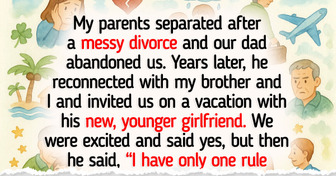
My Ex Cheated and Left Me, Then Had the Audacity to Ask for Help
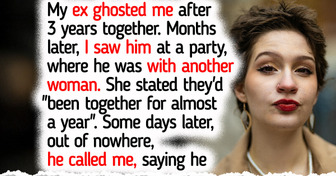
My MIL Said I Wasn’t “Family”, So I Made Her Regret It
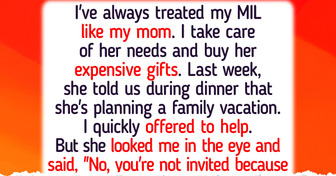
I Refuse to Help My Mother After She Blew All My Inheritance on Her Own Leisures
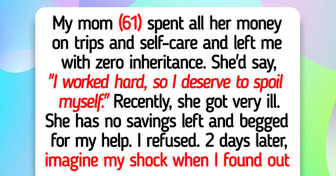
My Husband Thought I Was Faking My Period Pain—So He Secretly Set a Trap With His Mother

My Husband Spent All Our Savings to Hide His Secret

My MIL Keeps Disrespecting Me and My Work—Her Latest Act Was the Final Straw
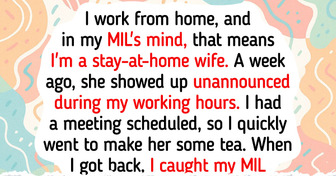
My Stepdaughter’s Fiancé Desperately Wants Kids, but He Doesn’t Know She’s Infertile

I Caught My Husband Funneling Our Life Savings to His Parents
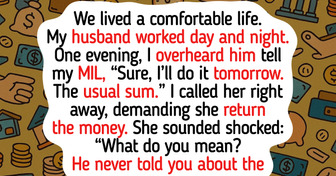
13 Stories About Coworkers From Hell Who Took Workplace Drama to New Levels
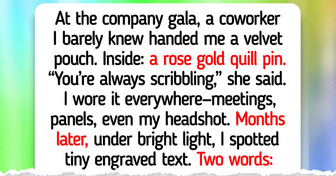
12 Nightmare Neighbors That Made People Sleep With One Eye Open
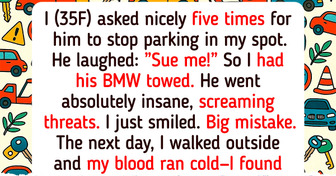
I Caught My MIL in My Closet—And My Fiancé’s Response Hit Me Like a Brick

